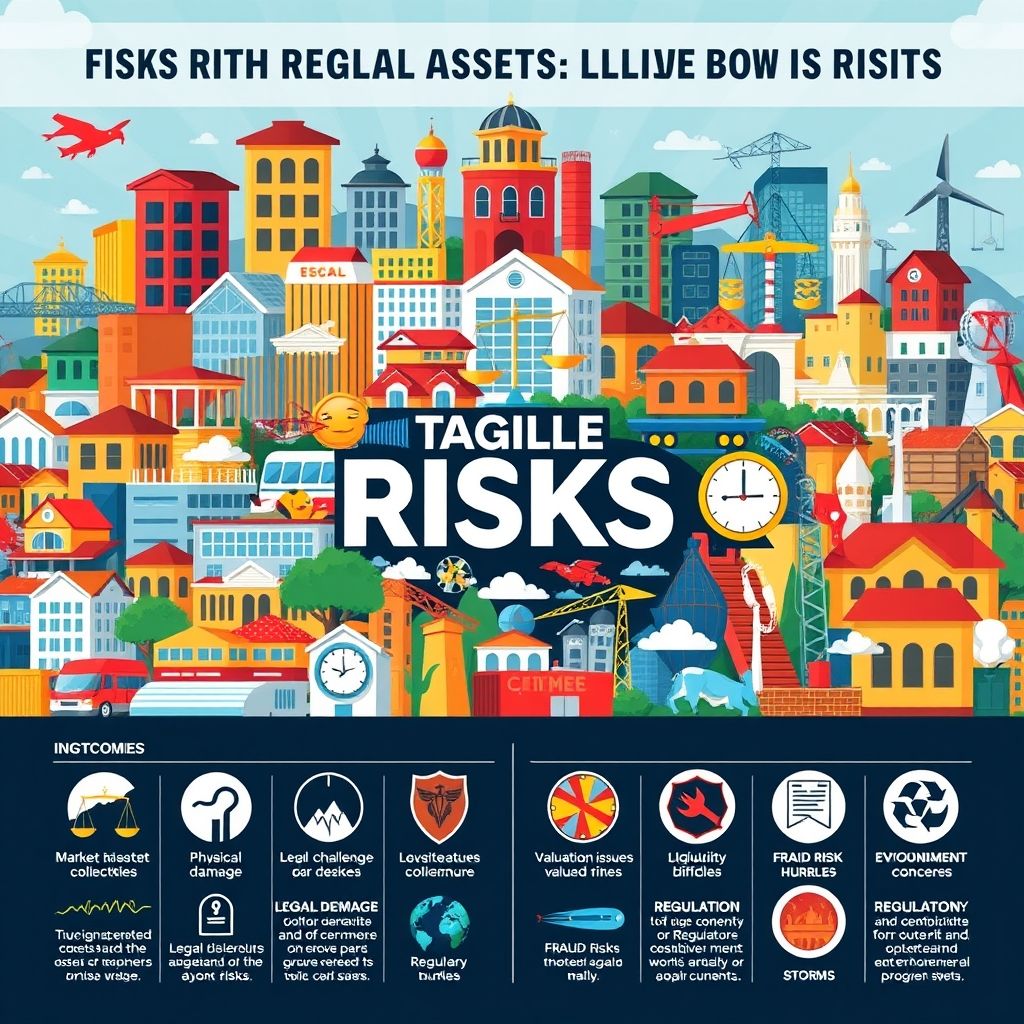What are the risks associated with real-world assets?
What Are the Risks Associated with Real-World Assets?
Investing in real-world assets—whether it’s real estate, commodities, stocks, or even precious metals—feels like anchoring your money in something tangible. But as much as these assets seem like safer bets, especially compared to pure digital tokens or speculative crypto, they come with their own share of twists. Understanding these risks isn’t just smart; it’s essential if you want to navigate the shifting sands of modern finance confidently. So, let’s dive into what those risks really look like and how they blend with today’s innovative DeFi and Web3 landscape.

The Hidden Fog of Illiquidity
One of the biggest surprises in real-world assets is how difficult it can be to cash out quickly. Unlike cryptocurrencies or stocks traded on highly liquid exchanges, physical assets like property or commodities often involve lengthy processes to convert into cash. Say you own a property—selling it might take months, even years, depending on market conditions. This illiquidity can become a net risk if you need quick access to funds, especially in turbulent times.
Example: During the 2008 financial crisis, many folks found it hard to liquidate assets fast enough to cover unexpected expenses, highlighting how illiquidity isn’t just an inconvenience—its a real financial hazard.
Market and Price Volatility
While real assets like gold or real estate are generally seen as stable, they still swing with market forces. Real estate prices can fluctuate, commodities are affected by geopolitical issues and supply-demand shifts, and even the “safe” metals arent immune to sharp price swings. These fluctuations pose risks for investors seeking consistent returns or trying to hedge in volatile periods—sometimes what looks like “safe” can suddenly turn into a gamble.
Case in point: The gold rush driven by uncertain economic conditions might seem like a safe haven, but gold prices surged or dipped quite dramatically during extreme economic events.
Regulatory and Legal Risks
Real-world assets are inherently tied to regulatory environments. Changes in laws, tax policies, or property rights can suddenly alter the value or usability of your assets. For example, a new government rent control policy might devalue rental properties overnight or introduce heavy taxation measures.
Think about: The controversy over land rights or mining regulations in certain regions—shifts happen faster than you can blink, often catching unprepared investors off guard.
Counterparty and Custodial Risks
Holding physical assets or even digital tokens representing those assets isn’t without risk—especially when it comes to custodians or third-party intermediaries. Theft, fraud, or mismanagement can result in loss, and recovering your assets might be an uphill battle.
Example: In crypto, weve seen exchanges get hacked or collapse, wiping out users’ holdings—imagine that happening with assets backed by real-world collateral.
The Evolving DeFi and Web3 Context
Now, here’s where things get interesting. The development of decentralized finance (DeFi) and Web3 platforms promises more seamless, transparent ways to trade real-world assets. Tokenizing properties, commodities, or stocks makes liquidity, transferability, and fractional ownership easier than ever. But this world isn’t without its own risks—smart contract vulnerabilities, hacking chances, and regulatory uncertainty loom large.
Smart tip: Always look for platforms with audited contracts, clear legal frameworks, and transparent operations. The future of DeFi is about blending the security of traditional assets with the versatility of blockchain, but its crucial to stay cautious.
Future Trends: AI, Smart Contracts, and Beyond
Innovations like AI-driven trading algorithms and smart contracts are changing the game. Imagine a trading system that analyzes market trends from countless data points, predicts movements, and executes transactions automatically—all with minimal human intervention. This could dramatically reduce emotional biases and improve precision.
Potential: As decentralized exchanges (DEXs) integrate advanced AI tools, traders may experience safer, more efficient trading environments. But remember—automation isn’t foolproof, and over-reliance can amplify certain risks.
Balancing the Pros and Cons
Yes, real-world assets still hold undeniable advantages: portfolio diversification, inflation hedging, and tangible value. But they require a certain level of due diligence—be aware of liquidity issues, legal frameworks, market swings, and custodial trust. As we lean further into decentralized finance, the key lies in building robust strategies: diversify holdings, leverage technology wisely, and stay informed about regulatory shifts.
Pro tip: Use advanced analytical tools, keep your assets insured or segregated, and consider leveraging conservative ones like options or lower leverage for risk mitigation.
Wrapping it Up
In the end, real-world assets aren’t a set-it-and-forget-it kind of investment. They demand vigilance, understanding, and strategic planning. But with the rise of innovative, tech-powered tools and platforms, we’re witnessing a new era where the line between traditional tangible assets and digital finance is blurred—creating opportunities but also expanding the landscape of risks. Just keep your eyes open, stay curious, and remember—knowledge is your best defense in this dynamic world of asset trading.
“In a world of shifting assets, the wise investor trades with eyes wide open.”

